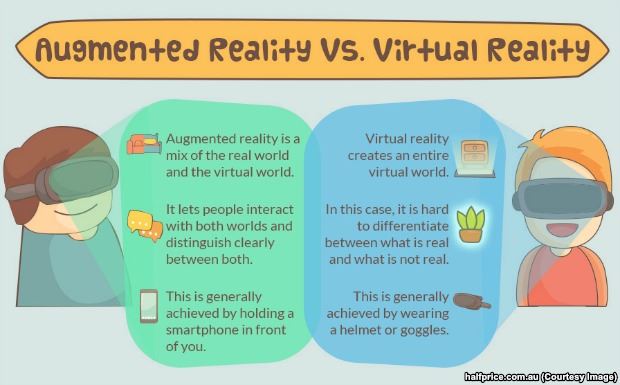Augmented reality and virtual reality are two of the ways that technology can change the way you look at the world. The terms can be confusing, though. Sometimes people think AR and VR are the same thing, but they aren’t.
Augmented Reality
Augmented reality is defined as “an enhanced version of reality created by the use of technology to add digital information on an image of something.” AR is used in apps for smartphones and tablets. AR apps use your phone’s camera to show you a view of the real world in front of you, then put a layer of information, including text and/or images, on top of that view.
Apps can use AR for fun, such as the game Pokémon GO, or for information such as the app Layar. The Layar app can show you interesting information about places you visit, using augmented reality. Open the app when you are visiting a site and read information that appears in a layer over your view. You can also find money machines, see real estate for sale, find restaurants, and more using the AR feature of the app.
Virtual Reality
Virtual Reality is defined as “the use of computer technology to create a simulated environment.” When you view VR, you are viewing a completely different reality than the one in front of you, and it may be artificial, such as an animated scene, or an actual place that has been photographed and included in a virtual reality app.
With virtual reality, you can move around and look in every direction — up, down, sideways and behind you, as if you were physically there. You can view virtual reality through a special VR viewer, such as the Oculus Rift. Other virtual reality viewers use your phone and VR apps, such as Daydream View and Google Cardboard.
With virtual reality apps, you can explore places you have never been, such as the surface of Mars, the top of Mt. Everest, or areas deep under the sea. The New York Times has a virtual reality app that lets you experience virtual environments on Earth and other planets.

Comment on this article and other GadgetGram content by visiting our Facebook page, or our Twitter and Instagram feeds.





